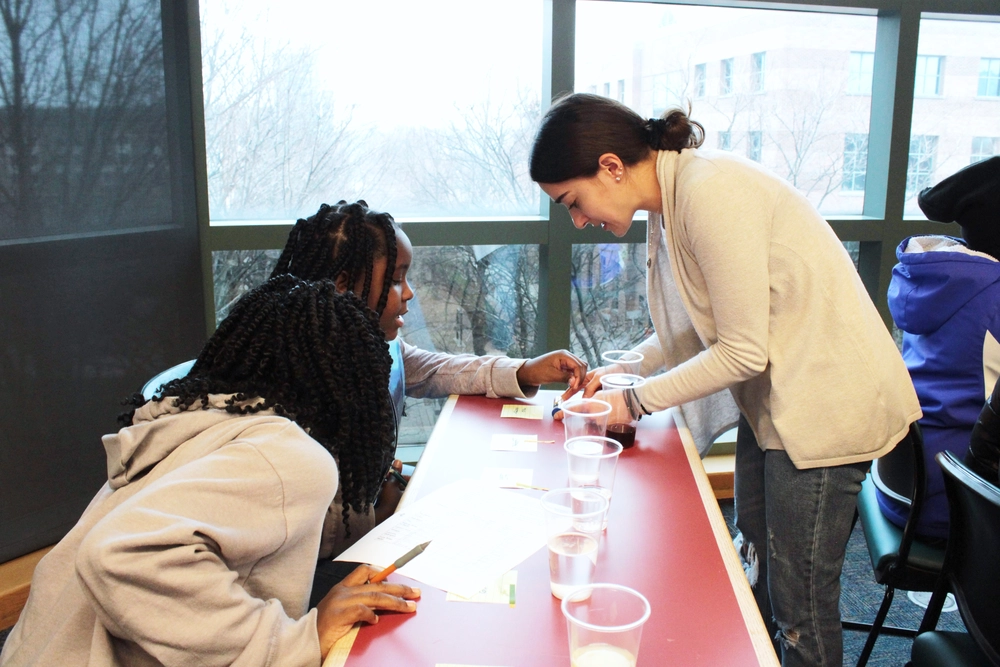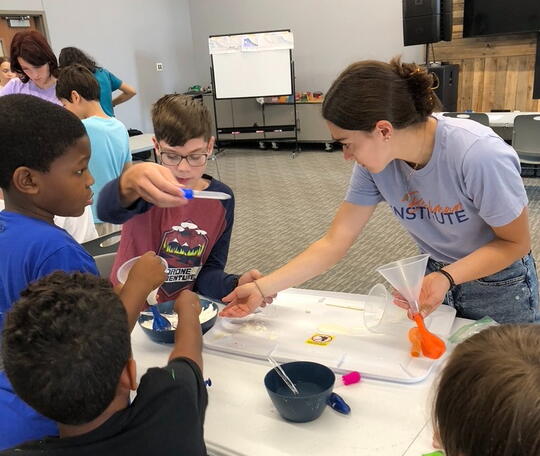
Nicole Godellas recently earned her PhD in Molecular and Integrative Physiology. Along the way, she joined the Beckman Institute’s outreach team and learned a few lessons about communicating science to the general public.
I never anticipated joining a communications team during my graduate career.
When I was a PhD student in the Department of Molecular and Integrative Physiology, I spent a lot of my time at the bench and in front of my computer. I always expected my journey to be quite linear: run experiments, analyze data, assemble manuscripts, repeat. However, this linear path took a detour when I interacted with Lexie Kesler, the Beckman Institute for Advanced Science and Technology’s outreach and communications specialist, and the rest of Beckman’s communications team.
These interactions were initiated through the Graduate College’s Career Exploration Fellowship, which allows PhD students to explore atypical career paths. I facilitated science communications seminars, internal research presentation events, and K–12 programming with local schools. I was quickly hooked — what was supposed to be a temporary, semester-long interaction became an hourly position that extended through the rest of my time as a graduate student.
My outreach work has undoubtedly shaped me into a better scientist. Here’s what I learned:
Style and substance go hand in hand
It is easy to get stuck in the rut of presenting your work to peers at a conference or to faculty members at a departmental seminar series. If it hadn’t been for my outreach work, I don’t know if I ever would have talked to a pre-K student about MRI or an eighth grader about non-Newtonian fluids. By understanding how and where to cut field-specific jargon, I have learned how to present not only my work, but also share the general concepts of others’ research to individuals of all age groups and levels of expertise. This is a skillset I'm still developing, but I have realized that the successful engagement of an audience should never be taken for granted.
An ‘Aha!’ moment goes a long way
Sometimes it only takes one interaction to influence the career trajectory of a young student. Think back to that “Aha!” moment that you may have had yourself. Sharing the ongoing research at the Beckman Institute and providing accessible programming for young audiences has shown me the lasting impact a single interaction can have on a student. Providing mentorship and guidance to those following in your footsteps is a beneficial way to give back — wherever you end up.

Focus on building bridges
Science can certainly be intimidating to non-scientists. And as a scientist myself, I know just how intimidating it can be to shape my work in a way that will grab the attention of an audience without any scientific background. Outreach at the Beckman Institute forces a bridge between researchers and the general public.
To bridge this gap, it was essential for me to connect with researchers and identify the core concepts of their work. Then, it was time to get the creative juices flowing. For example, what was the best way to explain the behavior of a non-Newtonian fluid to a group of middle schoolers? Making slime, of course.
On the other hand, how could we effectively connect our researchers with the local community? Partnering with The Literary Book Bar in downtown Champaign for a research presentation about reading and the brain.
In conclusion ...
What I thought was a temporary interaction turned into one of the most influential experiences of my graduate career. Bridging the gap between the research world and the so-called real world was always something I was curious to explore. My work in outreach helped to turn that curiosity into reality.
And, along the way, I’ve come to realize that it’s perfectly fine to take a few unexpected detours.
Photo credit: Beckman Institute Communications Office.